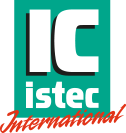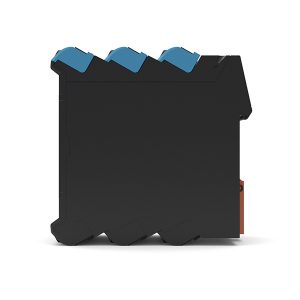SpeedSys 200 & 300 are SIL-rated overspeed protection systems for rotating machinery. The systems are highly adapted to growing market demands and challenge overly complex rack-based systems. This article describes 5 ways of how SpeedSys changes the overspeed market.
Read more about the SpeedSys 200 (SIL2) »
Read more about the SpeedSys 300 (SIL3) »
1. Compact architecture
The SpeedSys features a compact architecture while still being able to deliver high integrity overspeed protection. By sticking to the core of overspeed protection, Istec was able to use a DIN-rail housing as opposed to the traditional, 19” rack-based architecture, which mainly occupies the current overspeed market.
As the demand for high integrity (SIL rated) overspeed protection grows and extends to a wider range of machinery, the need for a more compact, yet scalable and modular system emerges. This has become part of the philosophy behind the SpeedSys; to protect what was previously left unprotected, both large and small, critical and non-critical rotating machinery. The compact architecture of the SpeedSys allows for a widely applicable overspeed protection system with a low technical impact.
2. SIL and proof-testing
SpeedSys is SIL-certified by design as opposed to proven in use. The difference between the two certification methods is evident in the required testing frequency to maintain the SIL rating and the possibility to apply changes or future product updates.
Read about the difference between SIL certification by design and proven in use »
Systems that are certified by proven in use require years of usage data and a high testing frequency to maintain their SIL rating. Changes to the system will invalidate this usage data and, subsequently its SIL certification. This could even lead to sudden obsolescence. The certified safety design of the SpeedSys features advanced self-monitoring that enables a proof test interval of at least 10 years and acts as a solid basis for future developments in the product line.
3. Financially competitive
Complex rack-based systems are often overkill for less critical or smaller machinery, and can thus not be financially justified. Depending on the desired voting structure, the SpeedSys can be used standalone (1oo1) or scaled up to three modules in different voting configurations to suit any application. This increases its financial efficiency and machine applicability compared to rack-based systems. One system that fits all rotating equipment, with more efficient spare part management and less maintenance requirements.
4. Extensive support
The SpeedSys differs from other overspeed protection systems not only from a technical and financial point of view, but also due to its outstanding usability and structured support. The system comes with extensive free online training environment, including instruction video’s regarding software and product use.
The possibility to register the product allows for application-specific support from our (over)speed specialists and gives access valuable e-learning courses, the latest software, best practices, and other valuable content. Istec’s growing global partner network provides local support.
5. Replacement solution
A growing obsolescence and the general discontinuation of overspeed protection systems by multiple OEM’s requires a replacement solution. SpeedSys is designed for low impact retrofitting of any existing overspeed protection system, to minimize the impact on the customer’s infrastructure. The small and scalable layout of SpeedSys allows for easy retrofitting that is adaptable to meet the existing measurement set-up. SpeedSys works with the three major sensor types (Hall-effect, VR and Proximity) and features built-in isolators to be integrated with any existing sensor infrastructure.
Want to read more about the SpeedSys? Visit the product page »


